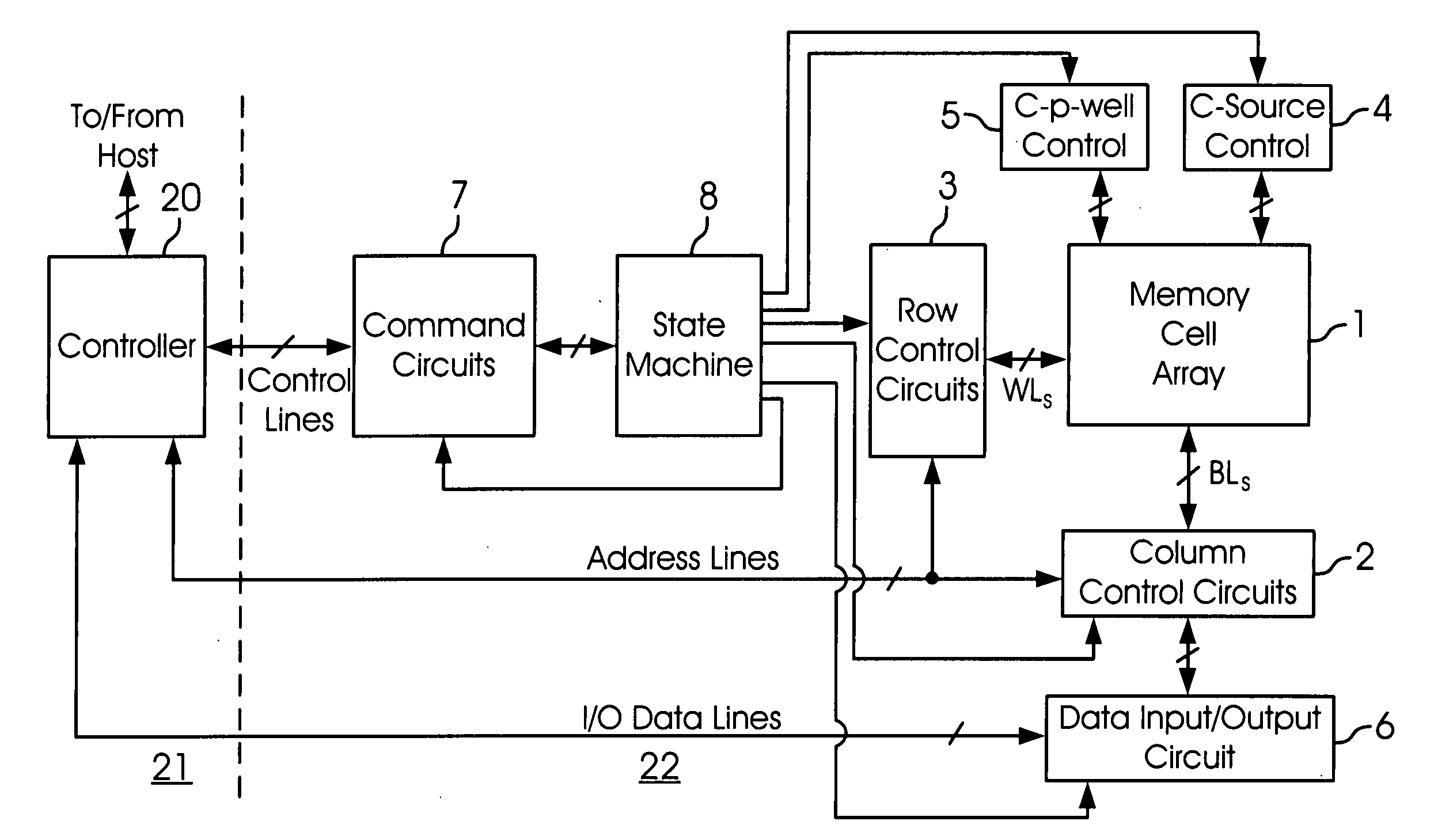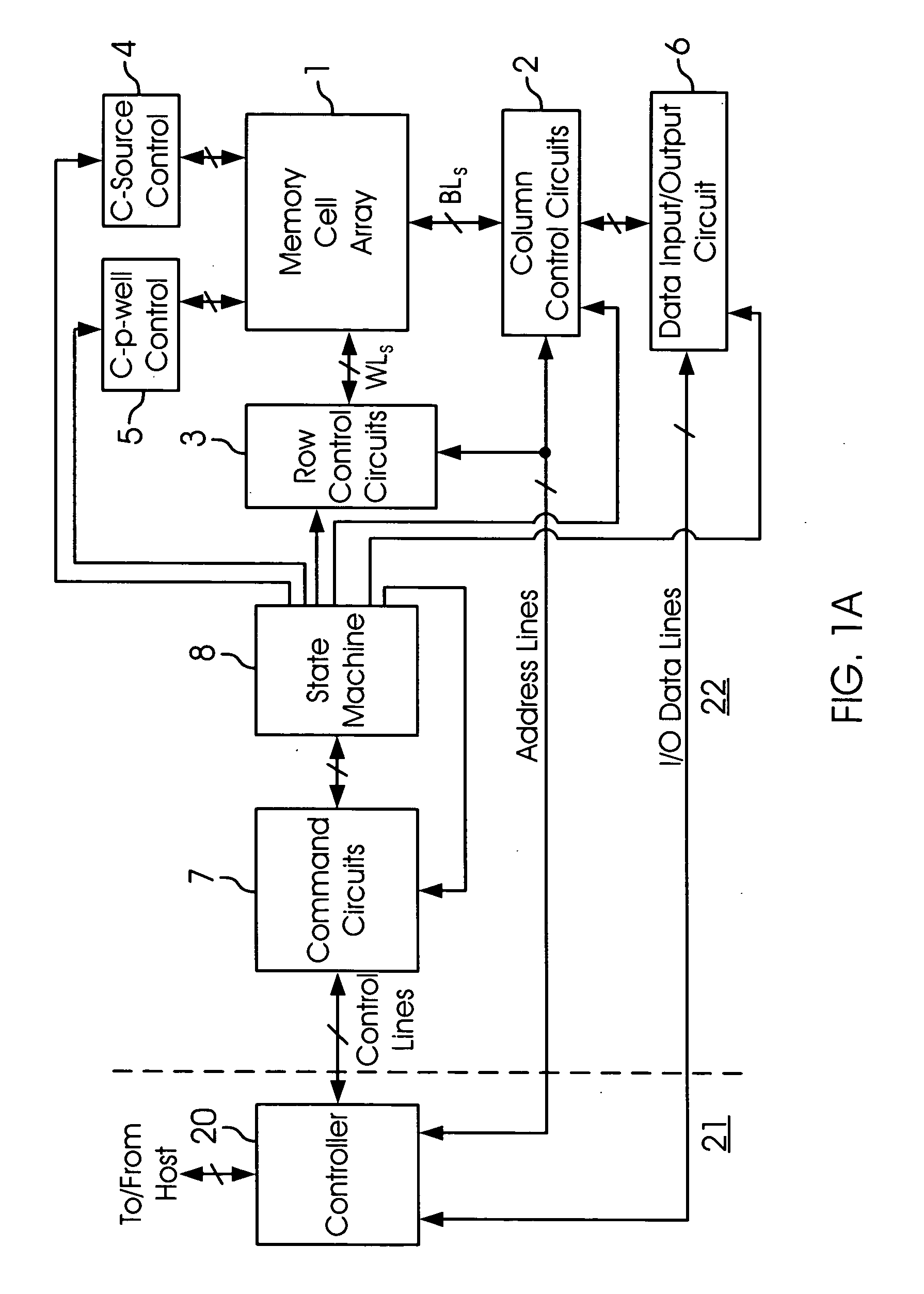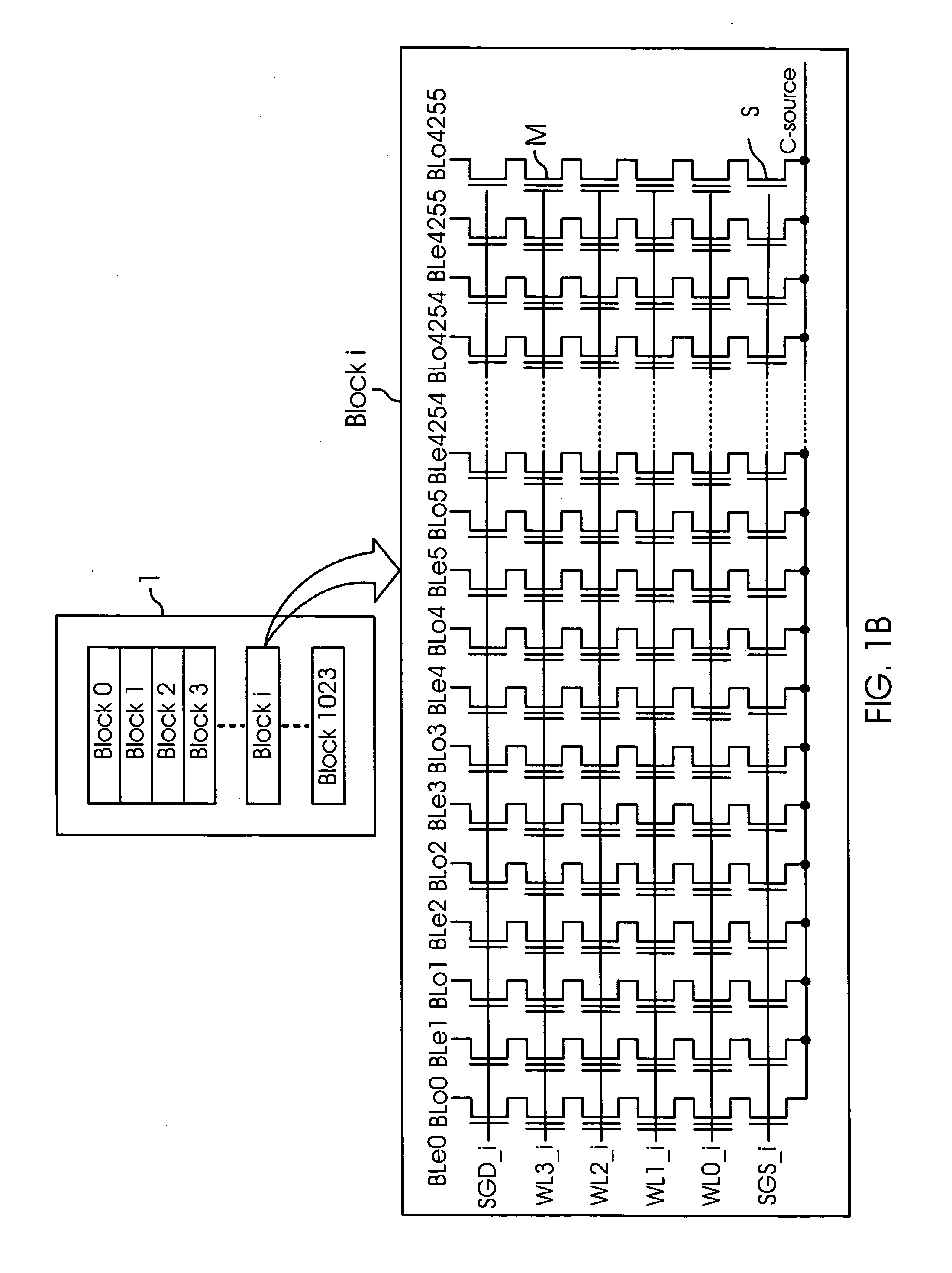Method and system for independent control of voltage and its temperature co-efficient in non-volatile memory devices
a non-volatile memory and voltage control technology, applied in semiconductor devices, digital storage, instruments, etc., can solve the problems of inefficient use of the valuable real estate of the integrated circuit, inability to distinguish one state from another, inaccurate data reading of memory cells,
- Summary
- Abstract
- Description
- Claims
- Application Information
AI Technical Summary
Problems solved by technology
Method used
Image
Examples
Embodiment Construction
[0032]Definitions:
[0033]The following definitions are provided as they are typically (but not exclusively) used in relation to NAND-flash memory devices, referred to by various aspects of the present invention.
[0034]“Temperature coefficient” or “TCO” is a multiplication factor operating on a temperature-dependent variable. In case of positive TCO, the variable will increase, and in case of negative TCO, the variable will decrease with temperature.
[0035]“VCGRV” stands for Gate Control Read Verify Voltage; a voltage applied to the gate of the non-volatile memory cell in excess of the threshold voltage of that cell to facilitate the reading state of the cell.
[0036]“VCGRV” is used in this document as the name of a voltage generator generating VCGRV.
[0037]In one aspect of the present invention, a system for independent control of Gate Control Read Verify voltage level and its associated TCO is provided. The system includes: a temperature-independent voltage generator having constant outp...
PUM
 Login to View More
Login to View More Abstract
Description
Claims
Application Information
 Login to View More
Login to View More - R&D
- Intellectual Property
- Life Sciences
- Materials
- Tech Scout
- Unparalleled Data Quality
- Higher Quality Content
- 60% Fewer Hallucinations
Browse by: Latest US Patents, China's latest patents, Technical Efficacy Thesaurus, Application Domain, Technology Topic, Popular Technical Reports.
© 2025 PatSnap. All rights reserved.Legal|Privacy policy|Modern Slavery Act Transparency Statement|Sitemap|About US| Contact US: help@patsnap.com



